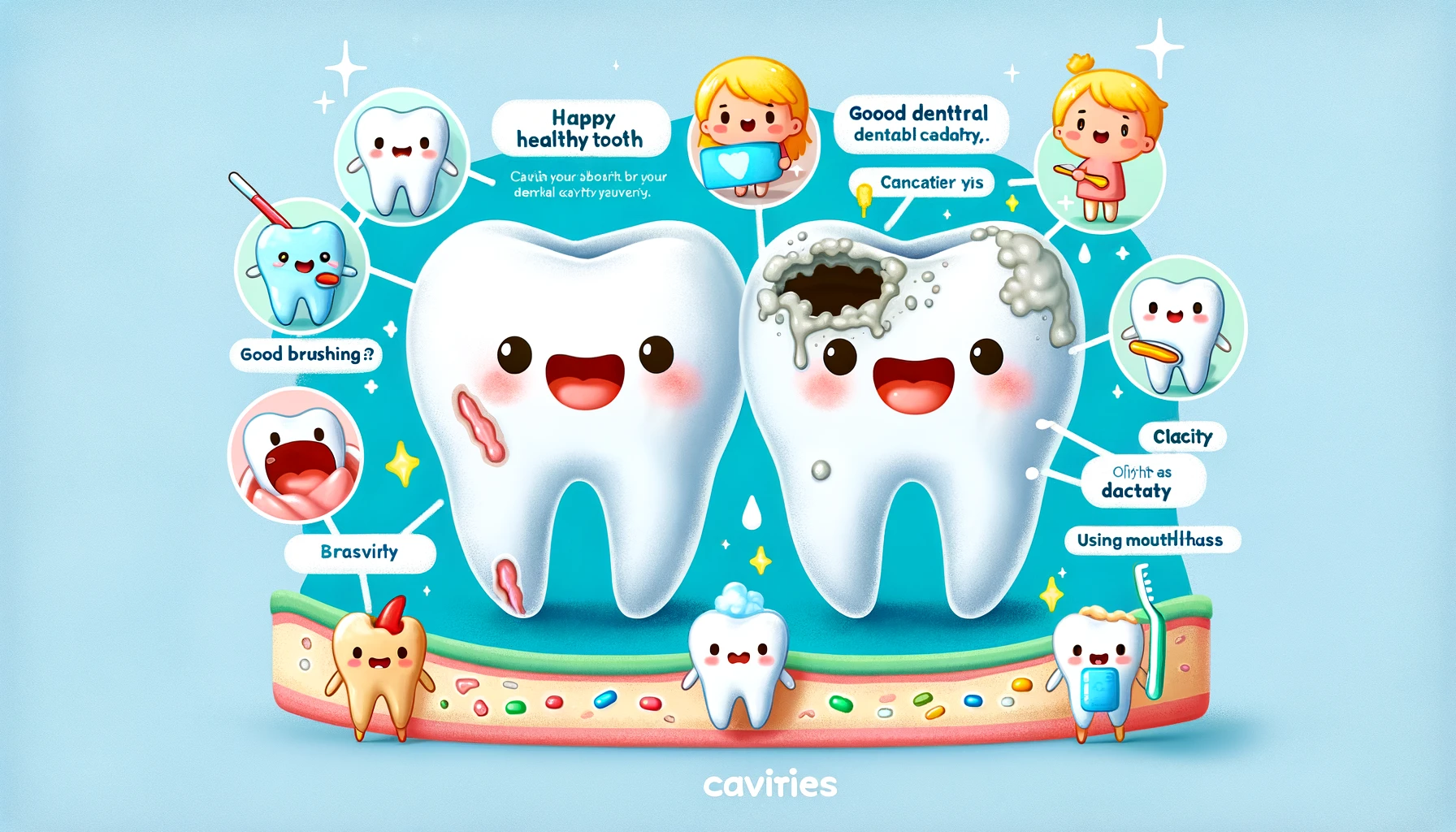Understanding Cavities: Causes and symptoms
Understanding Cavities: Causes and symptoms
Table of Contents
- Introduction to Cavities
- What are Cavities?
- Causes of Cavities
- Symptoms of Cavities
- Risk Factors for Cavities
- Complications of Untreated Cavities
- Diagnosis and Treatment
- Prevention Strategies
- Conclusion
- References
Understanding Cavities: Causes and Symptoms
Introduction to Cavities Cavities, also known as dental caries or tooth decay, are a common dental problem affecting people of all ages. They occur when the hard surfaces of teeth are damaged, leading to tiny openings or holes. This article explores the causes and symptoms of cavities, helping you understand how to recognize and prevent this prevalent dental issue.
What are Cavities? Cavities are permanently damaged areas in the hard surface of your teeth that develop into tiny openings or holes. They are caused by a combination of factors, including bacteria in your mouth, frequent snacking, sipping sugary drinks, and not cleaning your teeth well. Cavities can affect the enamel (the hard, outer surface of the tooth) as well as the dentin (the softer, inner layer of the tooth).
Causes of Cavities Understanding the causes of cavities is crucial for prevention. Several factors contribute to the development of cavities:
Plaque Formation
Plaque is a sticky, colorless film of bacteria that forms on your teeth when sugars and starches from food and drink are not cleaned off. The bacteria in plaque produce acids that attack tooth enamel.
Sugar and Starch Consumption
Frequent consumption of sugary and starchy foods and drinks, such as candy, soda, and chips, provides fuel for bacteria in the mouth, leading to the production of acids that erode tooth enamel.
Poor Oral Hygiene
Inadequate brushing and flossing allow plaque to build up and harden into tartar, which protects bacteria and allows them to continue damaging the teeth.
Dry Mouth
Saliva helps wash away food particles and bacteria and neutralizes acids produced by bacteria in the mouth. A lack of saliva, a condition known as dry mouth, increases the risk of cavities.
Acid Reflux and Eating Disorders
Conditions like gastroesophageal reflux disease (GERD) and eating disorders like bulimia can cause stomach acid to flow back into the mouth, eroding tooth enamel and leading to cavities.
Symptoms of Cavities The symptoms of cavities can vary depending on their size and location. In the early stages, cavities may not cause any symptoms, but as they progress, the following signs may occur:
Toothache
A persistent or occasional toothache is a common symptom of a cavity, particularly when eating or drinking something sweet, hot, or cold.
Tooth Sensitivity
Increased sensitivity to hot, cold, or sweet foods and drinks can indicate the presence of a cavity.
Visible Holes or Pits
Cavities can cause visible holes or pits in the affected teeth. These may be noticeable upon close examination or when feeling the surface of the teeth with your tongue.
Staining on Teeth
Brown, black, or white stains on the surface of the teeth may indicate the presence of a cavity.
Pain When Biting Down
Pain or discomfort when biting down or chewing can be a sign of a cavity, especially if the decay has reached the deeper layers of the tooth.
Risk Factors for Cavities Certain factors increase the risk of developing cavities:
- Age: Children and older adults are at higher risk due to different factors such as dietary habits and changes in saliva production.
- Diet: Frequent snacking, especially on sugary and starchy foods, increases the risk.
- Poor Oral Hygiene: Inadequate brushing and flossing contribute to plaque buildup.
- Dry Mouth: Reduced saliva flow can lead to increased cavity risk.
- Medical Conditions: Conditions like diabetes can increase the risk of dental problems, including cavities.
Complications of Untreated Cavities If left untreated, cavities can lead to severe complications:
- Tooth Abscess: A painful infection at the root of the tooth or between the tooth and gum.
- Tooth Loss: Severe decay can destroy the tooth, necessitating extraction.
- Infection Spread: The infection can spread to surrounding tissues, leading to more severe health issues.
- Chewing Problems: Discomfort or pain when chewing can affect eating habits and nutrition.
Diagnosis and Treatment Dentists diagnose cavities through a combination of visual examination, probing with dental instruments, and dental X-rays to detect hidden decay. Treatment options include:
- Fluoride Treatments: In the early stages, fluoride treatments can help restore enamel.
- Fillings: Dentists remove the decayed portion of the tooth and fill the cavity with a dental filling.
- Crowns: For extensive decay, a crown may be necessary to cover and protect the tooth.
- Root Canals: If the decay has reached the tooth’s pulp, a root canal may be required to remove the infected tissue and save the tooth.
- Tooth Extractions: In severe cases, the tooth may need to be extracted if it cannot be saved.
Prevention Strategies Preventing cavities involves maintaining good oral hygiene and making healthy lifestyle choices:
- Brush Regularly: Brush your teeth at least twice a day with fluoride toothpaste.
- Floss Daily: Floss between your teeth daily to remove plaque and food particles.
- Use Mouthwash: Rinse with an antibacterial mouthwash to reduce plaque and bacteria.
- Limit Sugary Foods and Drinks: Reduce your intake of sugary and starchy foods and drinks.
- Visit Your Dentist Regularly: Regular dental check-ups and cleanings can help detect and prevent cavities.
- Drink Water: Drinking water, especially fluoridated water, helps wash away food particles and bacteria.
Conclusion Understanding the causes and symptoms of cavities is essential for preventing and managing this common dental issue. By practicing good oral hygiene, making healthy dietary choices, and visiting your dentist regularly, you can reduce your risk of cavities and maintain a healthy smile.
<ⓒ WizardMedics (wizardmedics.com)>



